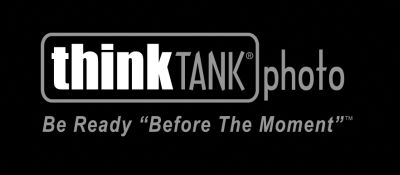 |
|||||||
|
|
|||||||
|
"When I get to a place
for the first time and know it like home, this is when I know my journey
will be over"
We Make a
Living by What we Got, but we Make a Life by What we Give
Treat Earth
Well! It was not given to you by your parents, it was loaned to
you by your Children
If you want to come out of that gift box
and be that gift to the world let someone open the box you sit in. It's
about stepping out and forward, not staying wrapped up in that horrible
gift wrap Aunt Sally picked out.
|
Wimberley
WH-200 Gimball Head Review A while back we had posted a review of the CineCity Gimball Head stating that is was an inexpensive alternative to the more expensive American Made models. It didn't take long before the money we thought we had saved showed why the Gimball head was so much less than its American Made competitors. We shot with it one day out in the rain and it now squeals like a stuck pig. I'm afraid to apply grease to the nylon bushings for fear it will then attract more dirt and compound the problem. Our 11lb Canon 400mm f/2.8 lens was testing the limits of this knock-off Gimball and I was nervous anytime we left it hung atop the tripod. Forget throwing the combo over your shoulder when hiking or moving about while out in the field. It wasn't long before we both knew we had made a mistake trying to save some money. In steps Wimberley. Wimberley Inc. is located in Winchester, Virginia and is owned by Clay and David Wimberley. They're known to make some of the smoothest working equipment in the Photography Business and its rare to see a long lens that is mounted to anything other than a Wimberly. There staff is one of the best we've spoken to on the phone and the day I called to order our kit, I think I spoke to the woman who answered for about an hour before I even got to ordering my new head. Something that I'm not used to these days of automated "Push 1 for English" types of customer service. Something that I cant say when trying to contact CineCity asking about how to lube the head that is squeaking so bad. After numerous emails sent to them, I've still yet to receive an answer and its been months. In my search for alternatives for a long lens mount, almost every time I saw someone selling a long lens head, I'd ask them what their reasoning was for selling the Gimball Head, the Ball Head or which ever model they were trying to get rid of. Almost every one of them would simply state "I'm moving up to a Wimberley, which I should have bought in the first place." So I thought rather than try any more of the imitations, lets just move right up to the Grand Daddy of them all and go with the best in the field. Up to the point of purchasing the CineCity side-mount Gimball, neither Cindy nor I had ever used this type of camera mount. Once you have a lens mounted onto a Gimball style head, it makes the lens so easy to operate, you will probably never go back to a traditional ball head. We were spoiled right away, but there were a few things we didn't like about the side mount of the CineCity. First of all, it makes it hard to mount a heavy lens by yourself, and it makes it almost impossible to mount it if you're in a hurry.
With the Wimberley, the mount is sitting level, so one person can slide the lens plate onto the Arca-Swiss style mount with one hand while balancing it and tightening it with the other. It just feels natural to let it sit in the plate, balance it and be shooting within a few seconds of setting the tripod up. The lens itself has a ton of adjustability to move fore and aft, up and down and with the Telephoto Flash Bracket, getting the flash up and over the huge hood on the long lens is no problem. I know comparing the Wimberley and the CineCity is like comparing apples to oranges, I'm just throwing this out there as they're the only two types of Gimball's we've used, other than a few days while we borrowed a friends Kirk King Cobra, which was also a side mount style Gimball. We would later let this friend borrow our Wimberley to compare to, which he returned it letting us know we had now ruined him and he didn't even want to go back to his Kirk. I think his exact words were something like "Why the hell did you let me borrow that, do you know how much money you just cost me?" Moving on to the Craftsmanship of the Wimberley The day we finally received our package from Wimberley, I was like a 5 year old on Christmas morning. This is one of those pieces of equipment that is on every photographers "Want" list, but one that is usually left there till it becomes a 'mandatory' item. When you drop as much money as we did on our 400mm, the last thing you want to do is pair it up with a mount that is going to result in unusable images. The Wimberley and the bigger Canon Lenses sort of go hand in hand, and you shouldn't have one without the other. There isn't enough I can say about the craftsmanship and the quality of the work the people at Wimberly put out. Granted, you get what you pay for and these mounts are a pretty penny, but once you finally have one in your hands, you know they're worth every single cent of your hard earned money.
The way the Wimberley Head comes packaged is so nice looking, I want to keep the box just to keep the head stored in it when not in use. Even the Zip Lock bags the extra set of screws and the directions came in were so heavy duty, I saved them and threw them in a camera bag incase I ever need to waterproof a piece of equipment while in the field. Our package we had ordered came with the newer Wimberley Type II Head or WH-200 as its called by Wimberly, a Wimberley P-50 Mounting Plate and a Wimberley F-9 Telephoto Flash Bracket. I know this sounds funny to say, but picking the metal Gimball head up, the pieces almost feel soft to the touch. I mean how can a piece of metal feel soft?
I couldn't wait to get the P-50 mounted on lens plate and the Wimberly head atop a tripod to test it out. The head itself has only two knobs to adjust the movement of the lens once its balanced on the mounting plate. The knobs are two large, soft rubber coated knobs on the same side of the arm. This means once the lens is mounted atop your tripod, your right hand sits on the trigger, while the left hand can tighten or loosen either of the knobs in an instant without looking or taking your eye away from the eyepiece.
This really helps out while trying to follow a subject that is moving or when your subject moves from one spot to the next, and you need to have to reposition the lens quickly without giving it too much thought. I think within the first 5 minutes of having the lens mounted atop my tripod, I had the controls memorized and it was like I had been using the combo for years already. It swivels side to side and swings up and down so smoothly, you'd think it was greased with baby oil.
The head itself weighs in a 3.15lbs, which sounds pretty heavy, but if you're using one of these long lenses to begin with, weight isn't really what you're worried about. The newer model, the WH-200 is a full pound lighter than their original version and has more user friendly control knobs from the dozens of reviews I've read comparing both versions. The only used Wimberley heads I was able to find being sold on the internet were these first versions that were being sold because they were moving to the newer version to save on weight and get the newer control knobs. That right there has to say something about their longevity and craftsmanship. I find if researching a product I'm interested in and I can find dozens of them For Sale, then there is probably a reason so many people are selling them. If you cant find one for sale unless it's brand new, then those who own them are keeping them and dont want to give them up. Testing the Wimberley in the Field We received our Wimberley Head back in June of this year. For the rest of the month it was used daily in Yellowstone National Park with either the Canon 400 f/2.8 or the Canon 500 f/4 lens mounted on it. Both pretty large and heavy lenses.
It
was used in pouring rain, dusty conditions and freezing temperatures.
Its yet
I know that Cindy was still afraid to use the 400 f/2.8 mounted on the CineCity Gimball because she said she didn't feel it moved all that smooth and was afraid when she'd loosen one of the mounts that the lens might fall. She also wasn't getting those crisp shots this lens is so legendary for. She now says that the lens mounted on the Wimberley feels like a much smaller lens and it makes it so easy to use, it's her lens of choice when we're shooting anything outdoors. The images she's getting with this combo is to die for and if there was one thing that made her photography step up a few notches, it was this combo. While in Cheyenne shooting the Frontier Days Rodeo, this combo of the Canon 400 f/2.8 mounted on the Wimberley atop a monopod was a knock out set-up for shooting the fast action of the Worlds Largest Rodeo. While covering the night time concerts, it was the envy of the other photographers in the photo pit. I let numerous fellow photographers try their hand at the combo who all returned it with a sheepish grin and a statement about being ruined for life until they owned one themselves. That particular rodeo was one of the dustiest events we've ever shot, and the moving parts of the Wimberly faired like it was nothing while shooting for 5 hours straight each day of the 5 days we shot in Wyoming.
Each night the WH-200 would be brushed off with a soft paintbrush I keep to dust the equipment off before it goes to bed, and the next day it would perform like it was meant to. Never a hint of sluggishness, a lag in the movement or the ability to allow me to capture some of my best shots to date. This was also some of the fastest, hardest type of action to follow due to the fact you never know which way the bull or rider is going to move next. It's not like tracking a bird in flight, not that this is an easy task either, but I think it's easier than tracking a bull trying to get a cowboy off his back.
So how do you make an 11lb lens feel like a lightweight? You mount it to a Wimberley WH-200 Head! Make sure to check back in a few months as we'll keep updating this review to let you know how the Wimberley has held up over time.
Need Unlimited photo storage- FREE Trial of Smugmug
|
||||||
|
|||||||




